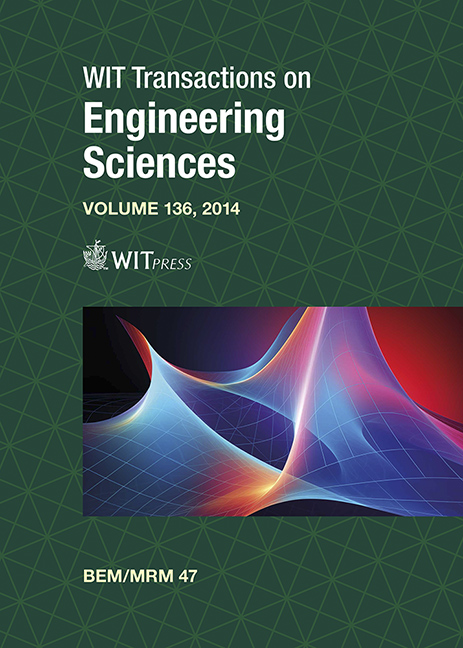ON MESHLESS LAGRANGIAN VORTEX METHODS FOR TWO-DIMENSIONAL FLOW SIMULATION AT MODERATE AND HIGH REYNOLDS NUMBERS
Price
Free (open access)
Transaction
Volume
136
Pages
12
Page Range
121 - 132
Published
2024
Paper DOI
10.2495/BE470101
Copyright
Author(s)
YULIA IZMAILOVA, ILIA K. MARCHEVSKY
Abstract
Vortex particle methods of computational fluid dynamics belong to the class of meshless Lagrangian particle methods, relying on integral representation of velocity field and boundary integral equations method. One of the main advantages of vortex particle methods is connected with the fact that they do not require to reconstruct or deform the mesh, which is important in coupled FSI problems. Vortex methods are widely used to estimate hydrodynamic loads acting on structural elements, especially for essentially unsteady non-potential flow regimes with intensive vortex generation. In a number of engineering applications involving modelling of long structures (bridges, pipelines, buildings), the only way to solve the problem is to use flat cross-section approach. In each cross-section, two-dimensional problem of flow simulation around an airfoil is considered. On one hand, modern models of vortex methods allow for a viscous medium simulating, and on the other hand, they are based on direct approximation of the diffusion term (the Laplacian operator in the Navier–Stokes equation). This makes it possible to correctly simulate the flow around airfoils at low Reynolds numbers. At moderate and high Reynolds numbers, simulation using vortex particle methods remains valid only for airfoils with sharp edges where flow separation takes place. For airfoils with smooth boundaries, the results of simulation do not correspond to experimental data. While the macroscopic flow remains two-dimensional, three-dimensional effects related to turbulence significantly influence the microscale behaviour. Numerical experiments have been performed; the scope of the viscous vortex domain method, implemented by the authors in original code (https://github.com/vortexmethods/VM2D), is estimated. A detailed study of the velocity field in a vortex wake behind a circular cylinder showed that the spatial and temporal spectra of turbulence kinetic energy align well with the Kolmogorov–Obukhov law, but with an exponent of (−3) instead of (−5/3). This observation is consistent with theoretical results for plane flows where three-dimensional effects do not appear at all. The possible ways for developing of two-dimensional models of vortex methods towards including of LES-type turbulence models are discussed.
Keywords
vortex particle methods, flow simulation around airfoil, high Reynolds numbers, turbulence spectrum, Kolmogorov–Obukhov law





